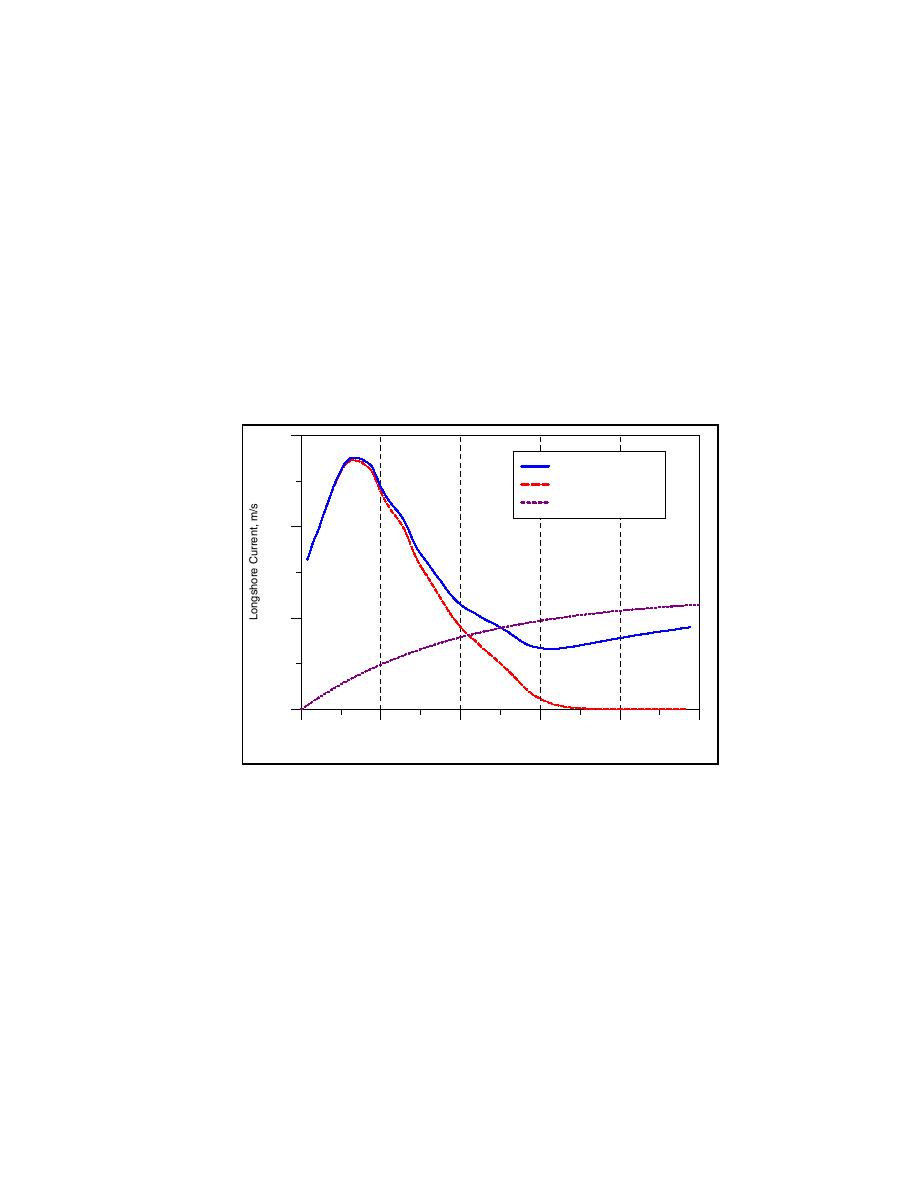
distributed in deep water). Also, a large-scale current was specified with an
alongshore component growing exponentially from zero at the shoreline to
0.5 m/s in the offshore and having no component across shore (δ = 90 deg).
Standard (default) values were specified for the wave and longshore current
parameters: γ = 0.78, κ = 0.15, Γ = 0.4, Λ = 0.3, and cf = 0.003.
Figure 49 illustrates the simulated longshore current for waves and large-
scale (L-S) current together, as well as for waves only. Also, the cross-shore
distribution of the input longshore current is shown. In the absence of waves,
NMLong-CW will exactly reproduce the input longshore current (see
Equation 34). However, if waves are present, the friction term will increase,
and the simulated current will typically also differ from the large-scale
longshore current outside the region of wave-generated currents. Because the
influence of the waves disappears in deeper water, the simulated current will
approach the input external longshore current (if there is no wind-induced
current).
1.2
Waves and LS current
Waves only
Large-scale (LS) current
0.8
0.4
0.0
0
200
400
600
800
1000
Distance Across Shore, m
Figure 49. Results of simulating large-scale current on wave-generated
nearshore current
Concluding Remarks
The capability of NMLong-CW to predict the cross-shore distribution of
the longshore current was evaluated by comparison with several high-quality
laboratory and field data sets. This comparison also involved the mean water
level and the wave height, if these quantities were recorded. The data
encompassed a wide range of forcing conditions involving both
monochromatic and random waves. Furthermore, different beach profile
shapes were investigated, as well as varying bottom roughness.
NMLong-CW gave good agreement with measurements for cases where
the profile was monotonically increasing with distance offshore, provided
that the roller model was included. Simulations without the roller model
69
Chapter 6 Verification of Longshore Current Model



 Previous Page
Previous Page
